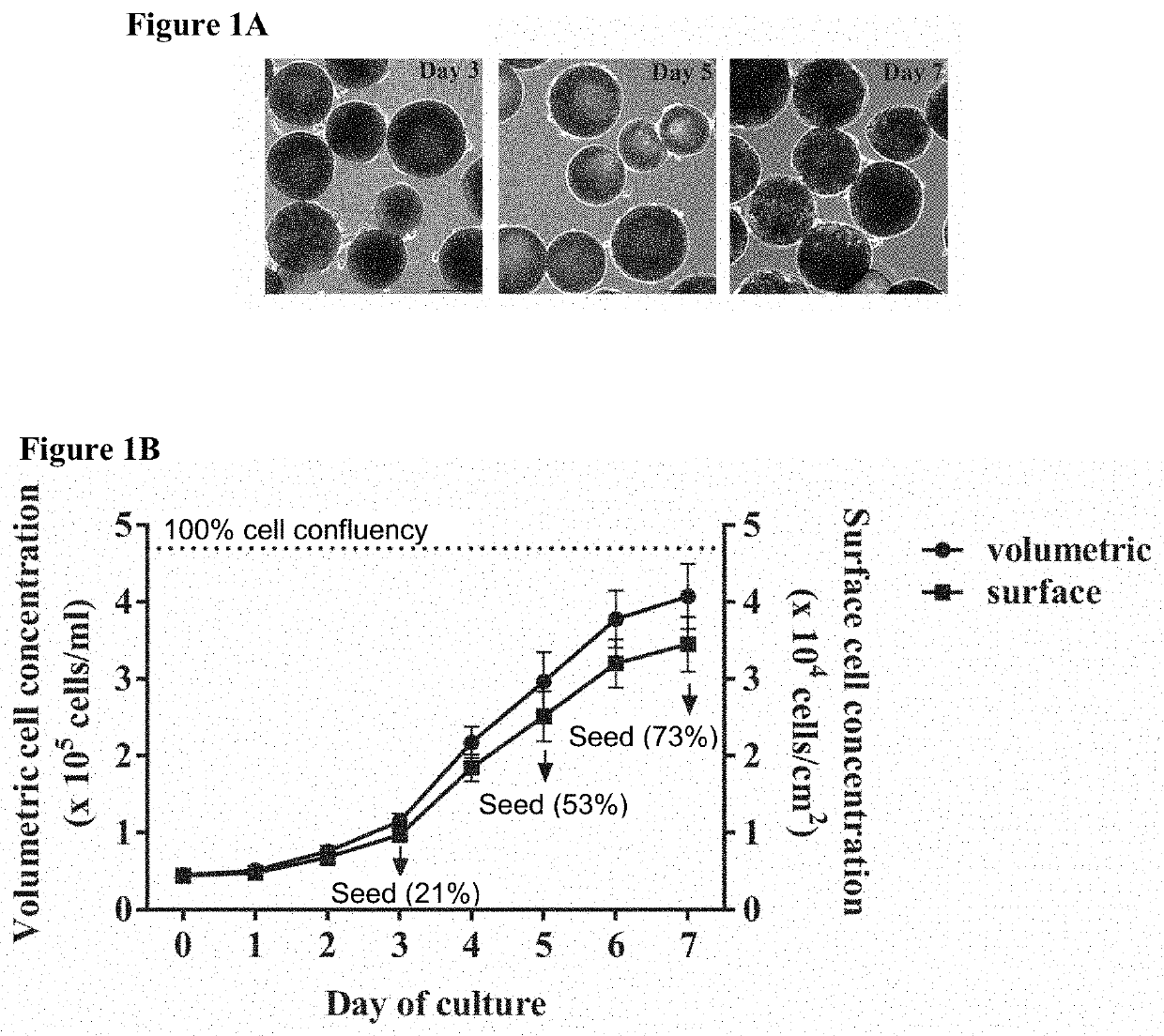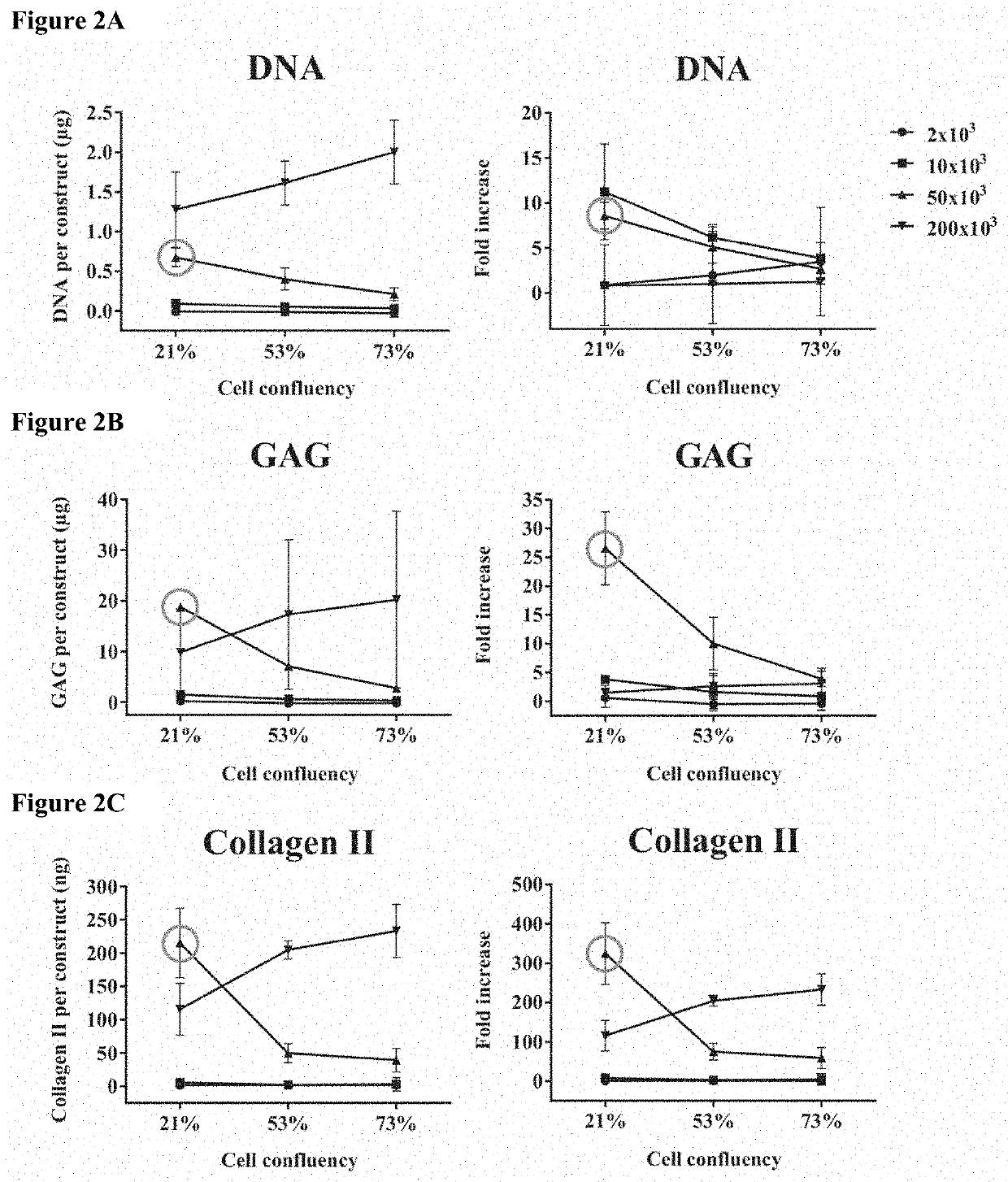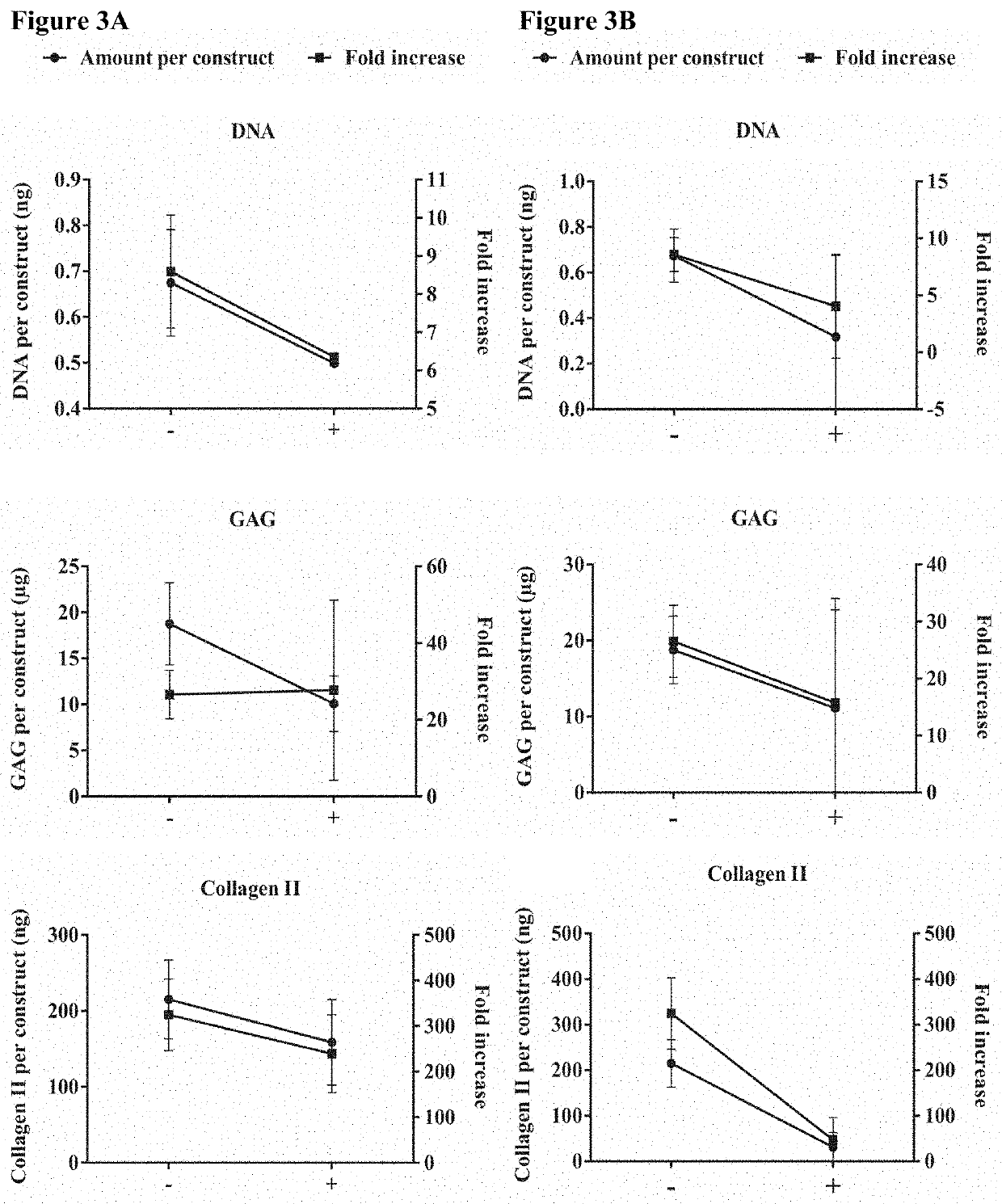An Implantable Construct, Methods of Manufacturing, and Uses Thereof
a technology of implantable constructs and constructs, applied in general culture methods, skeletal/connective tissue cells, biochemistry apparatus and processes, etc., can solve the problems of limiting the ability of mature cartilage and bones to restore themselves, scalable and reproducible, and affecting the translation of these therapies into clinical settings
- Summary
- Abstract
- Description
- Claims
- Application Information
AI Technical Summary
Benefits of technology
Problems solved by technology
Method used
Image
Examples
example 1
n of Critical Parameters to Achieve Efficient Chondrogenic Differentiation of heMSC-LPCL Microcarrier Constructs
[0140]Schematic of experimental design—Stage 1: heMSCs attached to LPCL microcarriers were seeded as chondrogenic heMSC-microcarrier constructs at either day 3 (early log phase with 21% cell confluency), day 5 (mid log phase with 53% cell confluency) or day 7 (late log phase with 73% cell confluency), using different cell numbers per construct. The critical cell confluency and cell number per construct were then identified by evaluating cell growth and differentiation output at day 21. Stage 2: heMSC-microcarrier constructs generated under critically-defined conditions as identified at Stage 1 were evaluated for the effect of compaction. heMSCs were seeded (i) with or without centrifugation and (ii) with or without agitation. The effects of centrifugation and / or agitation were determined by evaluating cell growth and differentiation output at day 21.
[0141]Results
[0142]Cell...
example 2
red LPCL MC Constructs for Allogenic Bone Regeneration
[0154]This example describes the development of a combined stem cell-biomaterial therapeutic product, which is scalable and bioimplantable for allogenic bone regeneration, in the form of critically-defined 50% hMSC-covered LPCL MC constructs.
[0155]Materials and Methods
[0156]PCL (average Mn 45 kDa, Cat. No. 704105) and poly-L-lysine hydrobromide (PLL) (MW 70-150 kDa, Cat. No. P6282) were sourced from Sigma-Aldrich. Fibronectin were purchased from Biological Industries. All chemical reagents were obtained from Sigma-Aldrich and all culture media and supplements were bought from ThermoFisher Scientific.
[0157]Fabrication of PCL MC
[0158]Porous PCL MC were fabricated using a two phase flow microfluidic device as previously reported. Briefly, PCL droplets were collected in a glass cylinder containing 70%-95% ethanol, soaking in ethanol leads to solidification of PCL droplets into porous PCL MC (with low density of 1.06 g / L and diameter,...
PUM
| Property | Measurement | Unit |
|---|---|---|
| Fraction | aaaaa | aaaaa |
| Fraction | aaaaa | aaaaa |
| Fraction | aaaaa | aaaaa |
Abstract
Description
Claims
Application Information
 Login to View More
Login to View More - R&D
- Intellectual Property
- Life Sciences
- Materials
- Tech Scout
- Unparalleled Data Quality
- Higher Quality Content
- 60% Fewer Hallucinations
Browse by: Latest US Patents, China's latest patents, Technical Efficacy Thesaurus, Application Domain, Technology Topic, Popular Technical Reports.
© 2025 PatSnap. All rights reserved.Legal|Privacy policy|Modern Slavery Act Transparency Statement|Sitemap|About US| Contact US: help@patsnap.com



